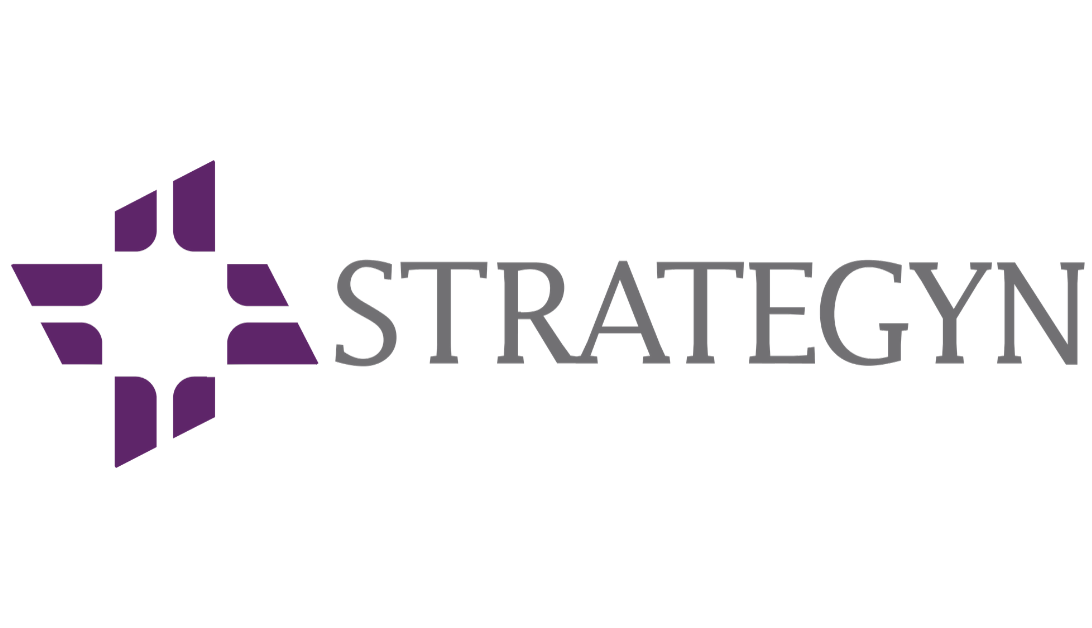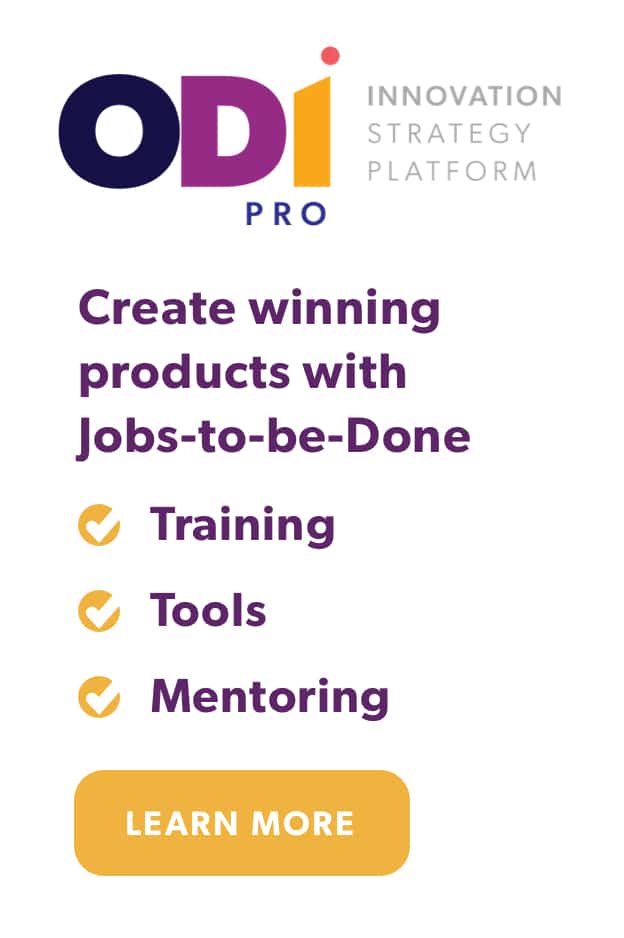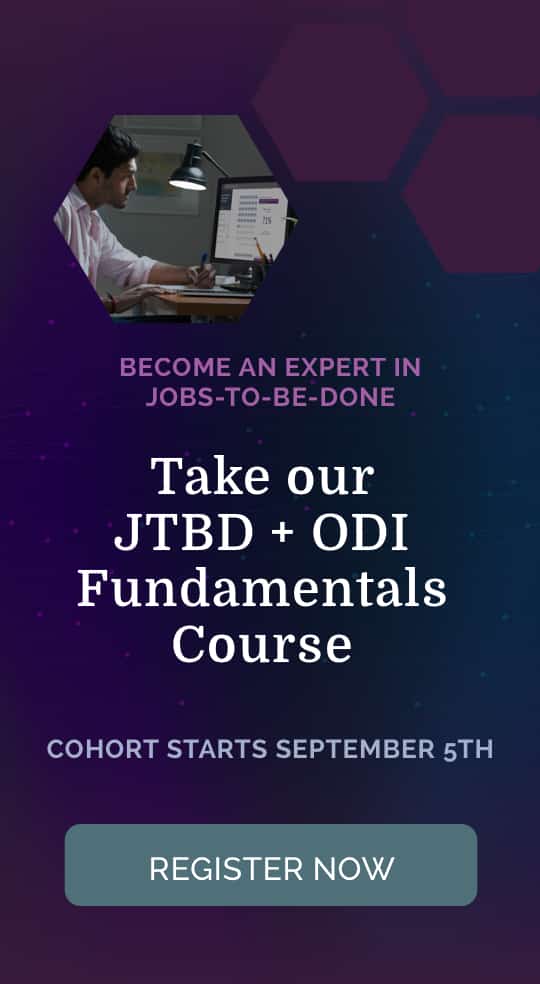“If I had asked people what they wanted, they would have said faster horses.”
—Henry Ford
Some think the lesson in Ford’s quote is “Don’t ask customers what they want.” They would be wrong. The point of this truism is that if you really want to create breakthrough innovations, what and how you ask matters.
(Yes, dumb questions DO exist, just like dumb ideas.)
If you simply ask customers what they want from your solution, they’ll almost always respond like the buggy-riders in Ford’s day: With ambiguous, subjective, unhelpful commentary.
“Make it better / easier to use / simpler / more durable / better looking / faster / slower / more comfortable / more cool / less stinky / cheaper.”
Sound familiar? Trying to innovate on this kind of customer input usually results in either weird, ‘What were they thinking?’ inventions or incremental, uninspiring line extensions that don’t move the needle toward your goals—much less land you on the cover of Forbes.
Unfortunately, this is how most “customer-driven” organizations approach innovation today. They ask “What do you want?” questions, and predictably get “Faster horses” answers. Then they set their engineers to work developing the fastest horse on the market. After years of research and millions in development costs, they end up frustrated and baffled when customers reject the game-changing, multi-patented, super-speedy horse that they had apparently asked for.
Garbage In, Garbage Out (“GIGO”)
Most would agree that GIGO is a universal law of process quality. It applies to manufacturing, computing, accounting, cooking, and every other process, including innovation. Innovation inputs, in the form of customer needs and opportunities, come from asking questions. But if you ask the wrong questions, ask the wrong people, or ask in the wrong way, you’re going to get garbage innovation inputs, resulting in garbage innovation outputs—which is bad for your customers, your company, and your career.
The Right Questions
The answer to this challenge is to stop asking unstructured, solutions-based questions (e.g., “How can we make our widget better?”) that elicit subjective answers. Great innovators like Ford, Jobs, and others focus on objective innovation inputs. Yes, you need to talk to customers. A LOT. But when you do, ask them these two questions first and foremost:
- What “job” is the customer trying to get done when they use your product or service?
With the possible exception of hoarders, people don’t buy stuff purely to have stuff. People buy products and services to help them get something done. In Ford’s case, this “job” is getting from point A to point B, whether the solution is horse-drawn buggies, automobiles, air travel, or roller skates. Focusing on the job, rather than the solution, is what freed Ford’s mind to disrupt the horse and buggy industry with his automobile. It can free your mind to change the world, as well. - What are the metrics the customer uses to evaluate how well a product/service helps them get the job done?
Every time your customers use your product/service or any competing solution, they’re measuring, consciously or unconsciously, how effectively that solution helps them get the job done. For example, when trying to get from point A to point B, it’s important to me to minimize the likelihood of getting bugs in my teeth. This “desired outcome,” or customer need, and others like it, are how I decide how well a solution helps me get the job done—and therefore which solution I will buy.
Your customers aren’t engineers, product designers or marketers. They’re not experts in developing solutions. You are. What your customers are experts in is the job they’re trying to get done and their desired outcomes when trying to do that job. So ask them about that. You’ll get much more meaningful, actionable answers.
You’ll know before you spend a dime on development which needs are unmet, and as a bonus, the answers you get won’t change by the time you launch your offering. Your odds of success will skyrocket, and your risk of creating irrelevant products the people don’t buy will plummet.
Great innovation isn’t easy, but it’s pretty simple. Get the inputs right by asking the right questions, of the right people, in the right way. Making innovation into a science leads to consistently breakthrough innovations. Just like Henry’s.





